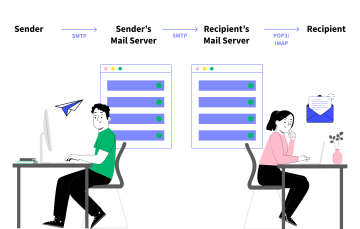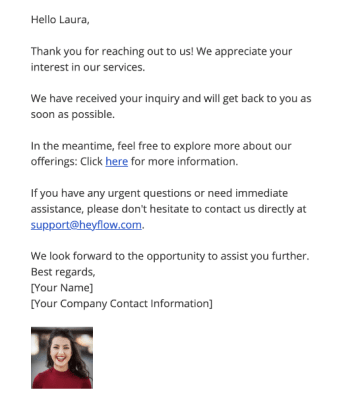Guides & best practices
View all articlesWhat is Simple Mail Transfer Protocol (SMTP)? A complete guide

SMTP (Simple Mail Transfer Protocol) is the backbone of email communication worldwide. While it plays a crucial role in sending and receiving emails, it is also a complex protocol that involves detailed technical processes.
That being said, the intent of this specific article isn’t to overload you with in-depth technical know-how. Instead, we’ll deliver the basics of SMTP, making it easy for you to understand what it is, why it works, and how it’s important in today’s world.
We’ll also show you how, using SMTP, you can create custom automated email servers to maximize customer communication.
What is Simple Mail Transfer Protocol (SMTP)?
Simple Mail Transfer Protocol, or SMTP, is an email protocol that allows users to digitally send an email message to another email account. It is the standard for popular email clients you may already use, such as Microsoft Outlook or Google’s Gmail.
To simplify the concept of SMTP, think of it like sending a physical letter in an envelope to a friend. In this analogy, SMTP acts as the mail carrier, delivering your letter to your friend’s mailbox. Just as the mail carrier ensures your letter reaches its destination, SMTP ensures your email is properly routed and delivered to the recipient's inbox.
What’s the difference between SMTP and POP3?
You’ll see the term POP3 come up when looking into SMTP processes, so how does it differ from SMTP?
POP3 is Post Office Protocol, which is the digital way in which many email clients retrieve email from servers. Whereas SMTP sends an email from the Sender’s system, POP3 retrieves the message, taking it from the server to the Recipient’s system.
What’s the difference between SMTP and IMAP?
IMAP, or Internet Message Across Protocol, retrieves email messages from mail servers. It differs from SMTP in that SMTP is used for sending messages, while IMAP is used to retrieve those messages.
What are the benefits of using SMTP?
Why is SMTP widely used? Here are the main reasons:
Provides the ability to send email en masse, with low chance of failure
Economically viable
One of the most effective, fast, and trustworthy message delivery processes
Allows for dedicated servers, which reduces space restrictions
How does SMTP work?
Before we talk about some useful applications for SMTP, let’s give a brief breakdown of how it works.
A Simple Mail Transfer Protocol defines the process of sending email messages from server to server. The sender uses an email client, such as Google’s Gmail, to craft an email message. When the message is sent, it is taken to the Sender’s mail server. It’s then moved to the Recipient’s mail server, then pushed through to the Recipient’s email client (Gmail, Outlook, etc.).
The picture below demonstrates the SMTP process in action from start to finish.

The SMTP process is complicated and highly technical, and we don’t want to bog you down with the entirety of it. Instead, we’ve given you the information to gain a basic understanding of SMTP.
Now let’s take a look at how your marketing team can connect their email to important lead-generation and form-building tools using SMTP, in order to send customized automated responses to potential customers.
Why do marketers use SMTP?
An SMTP server helps marketers connect with their customers effectively, saving time and resources in the process.
All types of marketing teams rely on email marketing to follow up on potential leads, contact current customers, update company information, and more. SMTP streamlines these processes by giving marketers a server to send mass email campaigns to the right people at the right time. The messages are delivered quickly, and don’t typically get designated to an automated spam folder.
Send personalized responses using a custom email server
If you’re a marketing team looking for a way to reach out to leads, you can use SMTP in combination with a lead-generation system, such as Heyflow.
What are the benefits?
Superior communication with potential customers and applicants
Automated email messages to save time and effort
Directs leads to the next phase of the signup or joining process
Example lead-generation tool to use with an SMTP
So what does it look like to create a custom email server to send personalized responses? Here’s a templated email built within the Heyflow system.

Some takeaways:
The email was automated and includes the recipient’s name, as well as a place to input the sender’s name and information
There’s a link included in the email template, which guides potential customers to the right place to learn more about your company and its products/services
The message is optimized for bulk communication, making it ideal for connecting with a wide audience
Heyflow is a valuable lead generation tool that provides no-code form building, customer data analysis, effective lead segmenting, and more. It allows users to create custom email messages and use custom email servers with SMTP, making it a seamless choice for marketers in their email communication campaigns.



